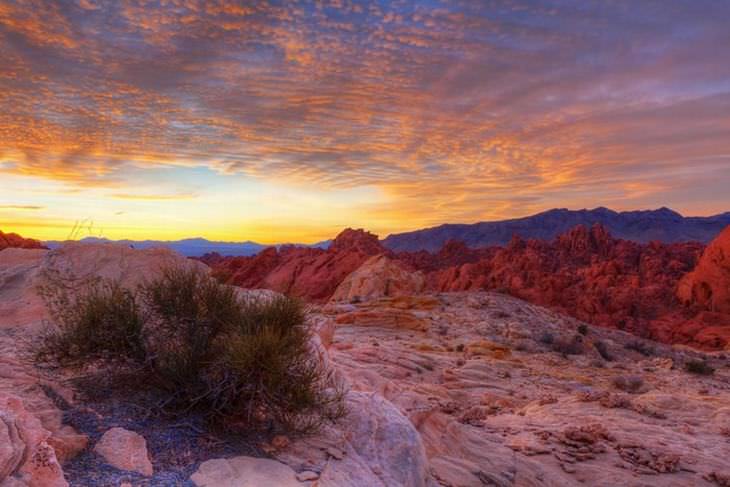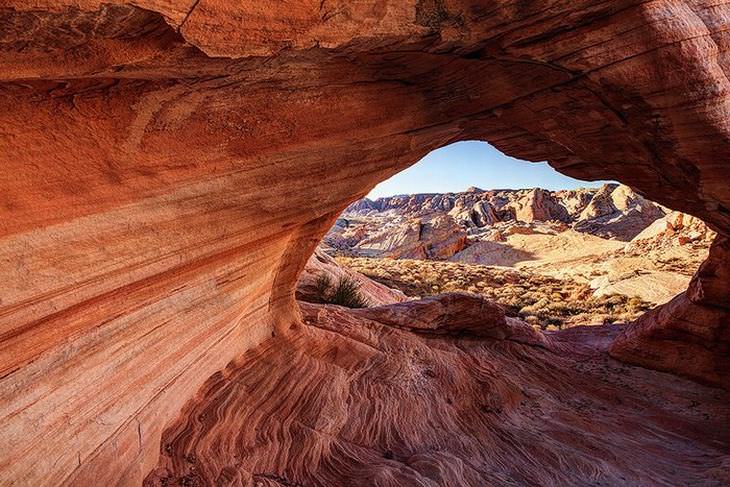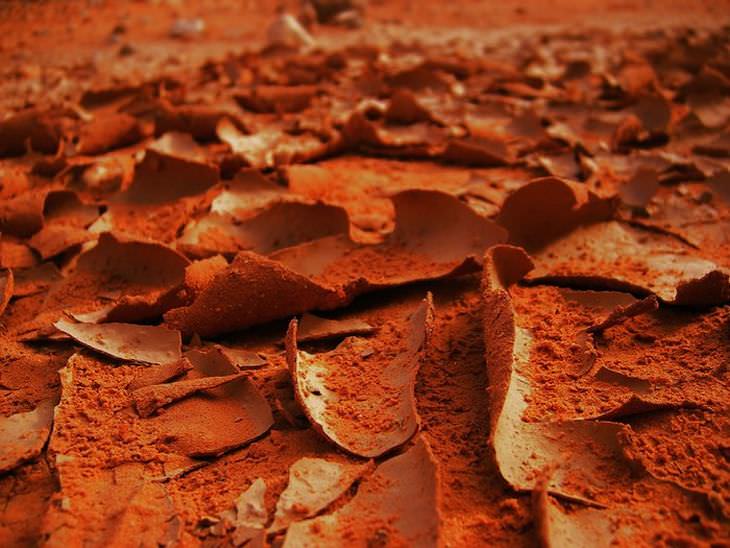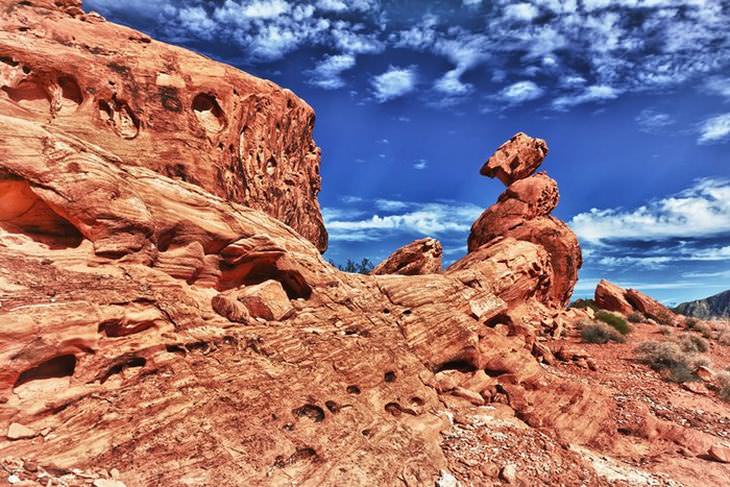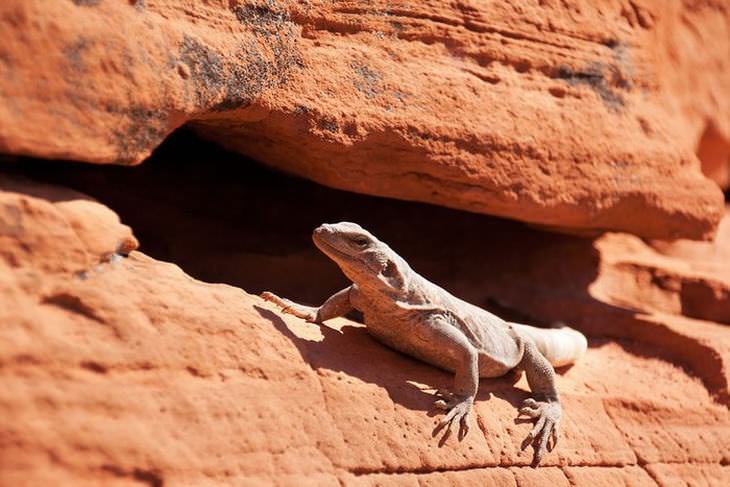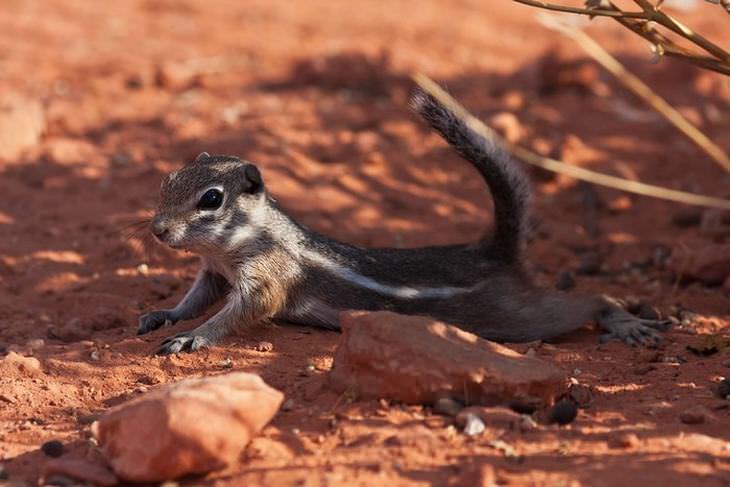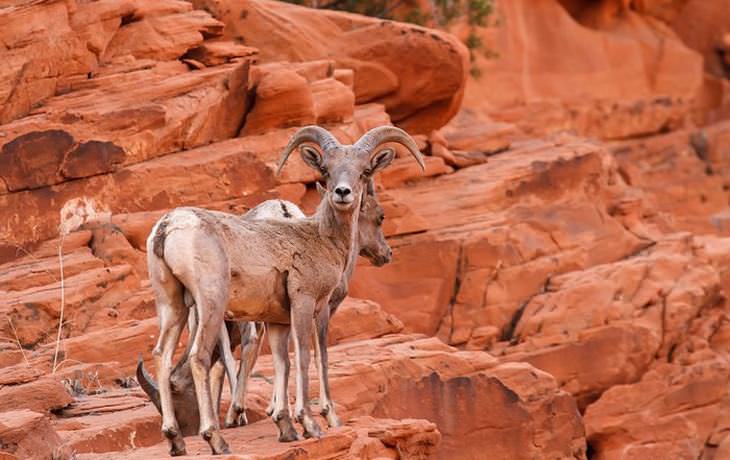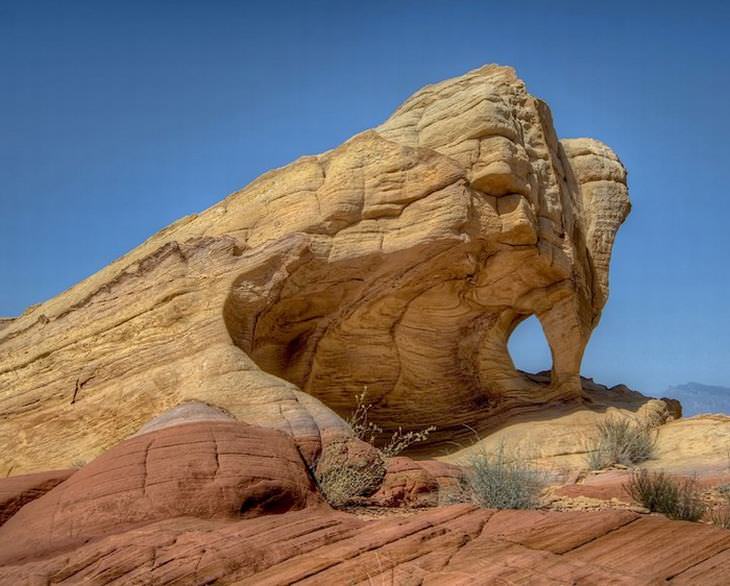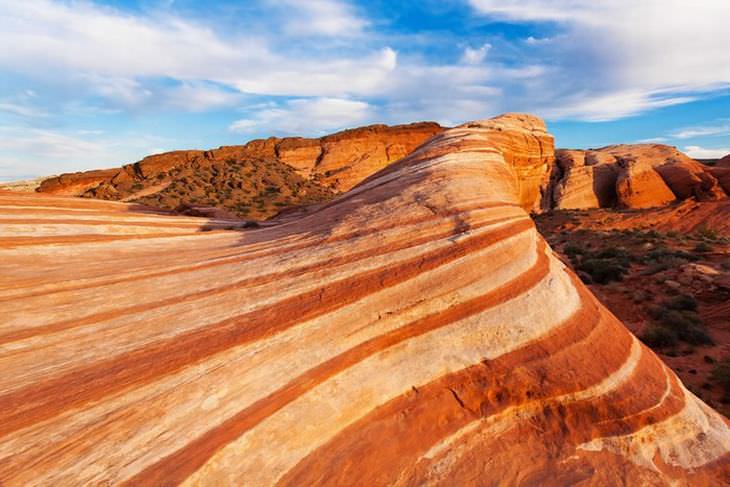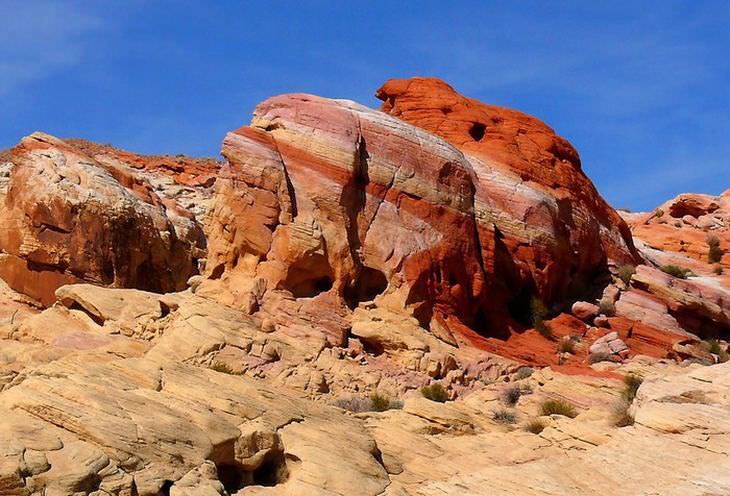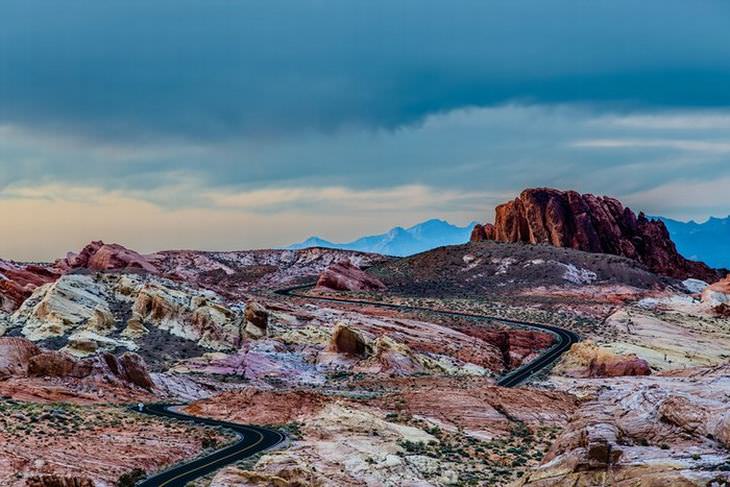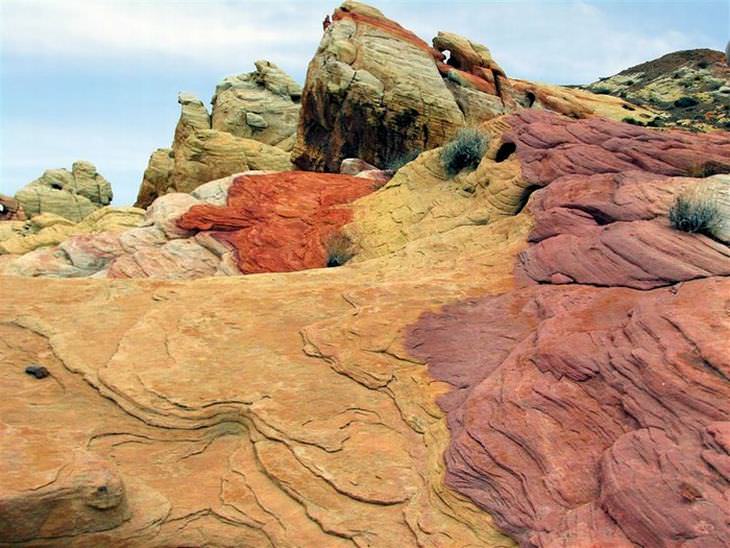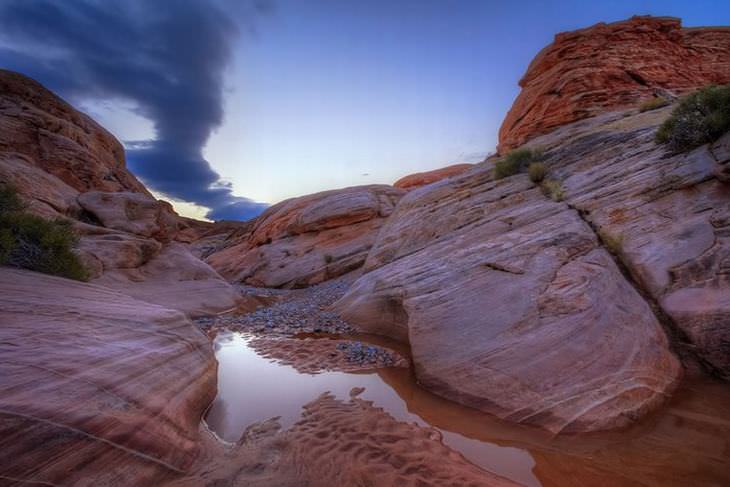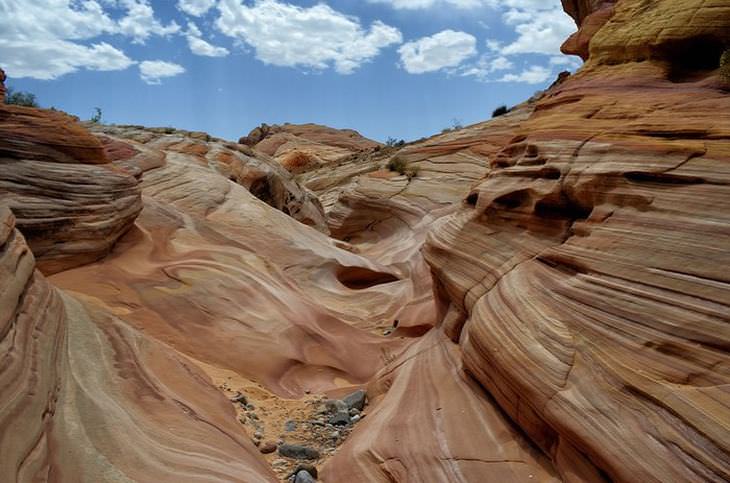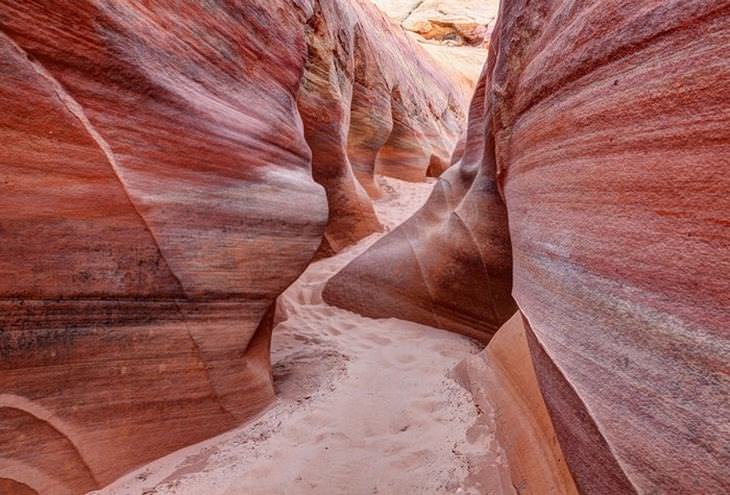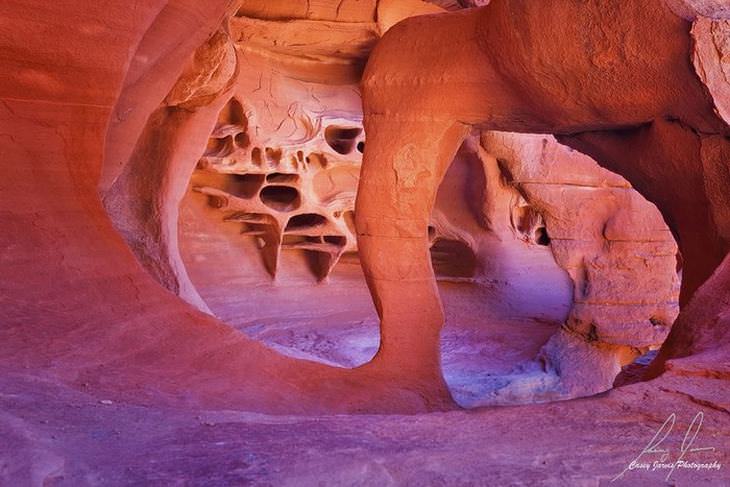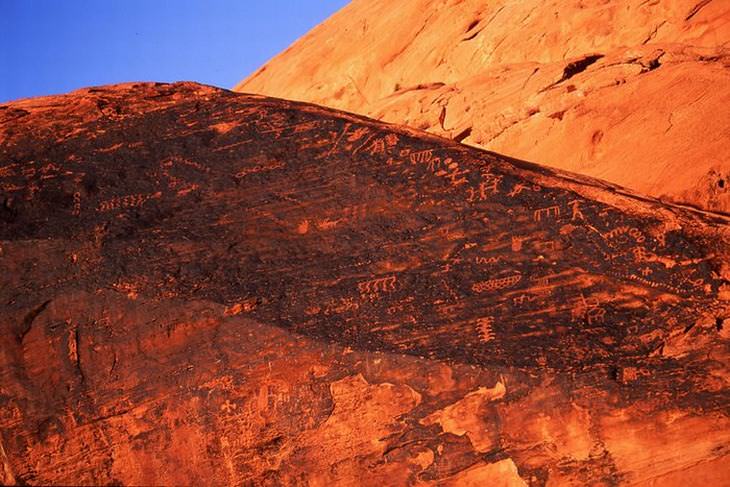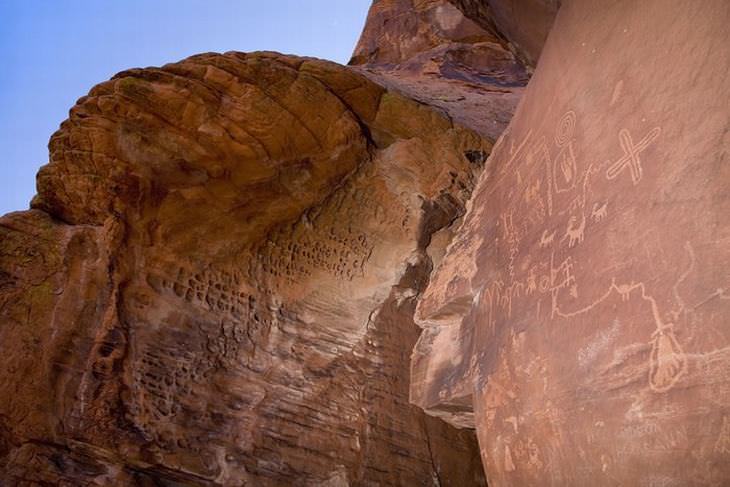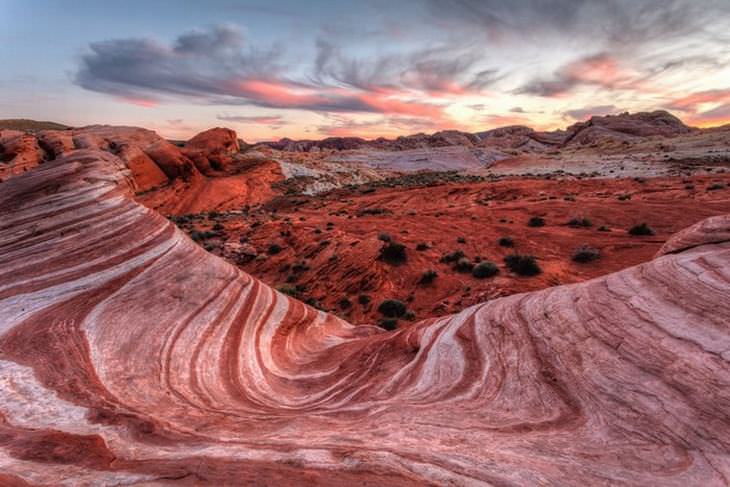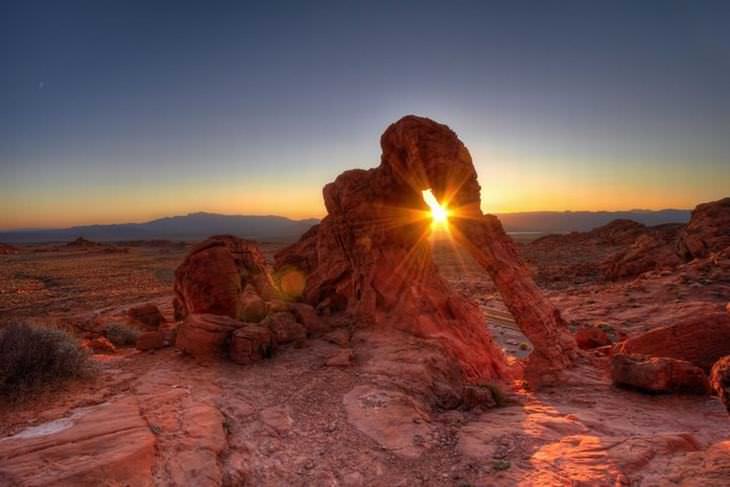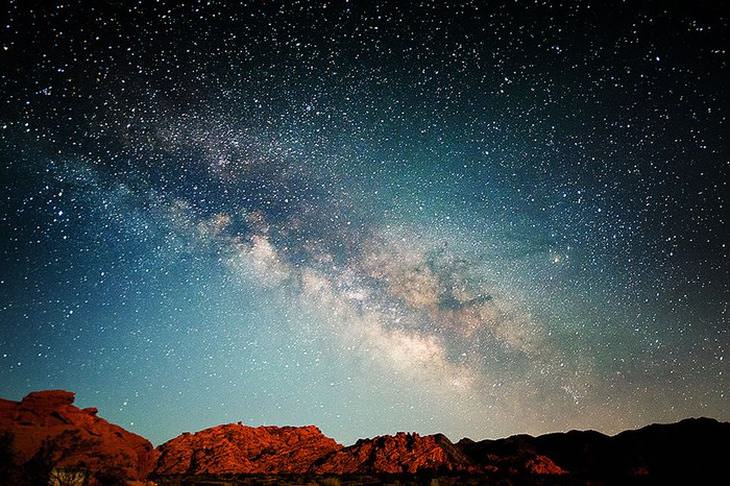
In the days before the first European colonists arrived, the Nevada desert was the home of the Ancient Pueblos (also known as the Anasazi). But before the Pueblos colonized the region, it was shaped by natural forces. Water, winds and tectonic movements molded the land, carving gorges and canyons in the earth and pushing mountains up.
Join me on a visit to one of the most beautiful places in North America.
Sunrise
As the sun rises over the desert, temperatures shift from about 50°F (10°C) to a sweltering 110°F (43°C).
Life
But this seemingly-dead land is actually the home of many animals, like this chuckwalla - the second-biggest lizard in the United States.
Colors and Shapes
Occasional water flow and constant winds blast these rocks, carving holes and arches through them, a process that has taken place over millions of years.
Water
Water is the rarest, most prized resource in the desert. It forms a small temporary oasis, which quickly dissipates in the heat of the day.
Petroglyphs
The native inhabitants of the land - the Pueblos, left many petroglyphs along the walls in various parts of the desert.
Evening
At sunset, the desert starts to cool down, and the sky starts to mimic the reds, pinks and yellows of the desert below.
Night
The desert is a natural deterrent for human habitation, leading to very low levels of light pollution. This leads to a spectacularly clear night-sky, where the splendor of the universe is visible again.
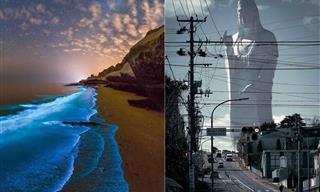
Beauty Can Be Found In Anything - 18 Fascinating Photos
From faraway corners of the globe to stunning natural views and curious animals, these photos showcase the wonders of the world.
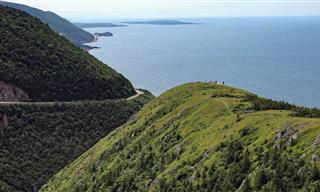 6:53
6:53
Take In the Beauty of This Coastal Road In Nova Scotia
In this spectacular video, you get to take in the beautiful coastal scenery and lush greenery of the Cabot Trail in Nova Scotia from the comfort of your own home.
 4:32
4:32
Experience the Unmatched Beauty and Atmosphere of Bolivia
This video will take you on an unforgettable tour through the bustling cities and breathtaking nature of Bolivia

Secret Holland: 10 Towns Really Worth a Visit
The Netherlands is considered one of the most beloved countries in Western Europe, but to get to know it well, visit these 10 villages and towns.
 5:28
5:28
The Natural Beauty of South Africa is Simply Astounding
This video will take you on a road trip around Cape Town and Kruger Park, exploring the gorgeous nature and wildlife of South Africa.
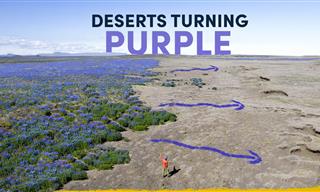 9:04
9:04
Iceland's Deserts are Flowering Again With This Species
A purple flower has taken over Iceland's deserts...
 2:32
2:32
Watch Penguin Chicks Hatch in this Beautiful Nature Video
This fascinating video uses hidden cameras to capture the moments when baby penguins emerge from their shells, ready to be shown off by their proud dads.

When it Comes to Beauty, These Fish Are Top of the Class
Here you will find 10 of most beautiful freshwater fish in the world. These fish will more than brighten up your freshwater aquarium.
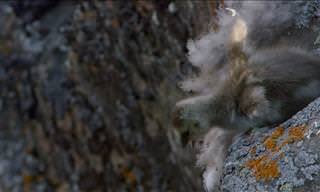 2:14
2:14
A Heart-In-Mouth Video About a Chick's Fight To Survive
The adaptations of nature are truly incredible. Barnacle goose chicks have to leap off cliffs within hours of their birth to reunite with their parents.

Nature Photos Rarely Get Any Better Than This! (20 Pics)
Check out the breathtaking winners of the GDT Nature Photographer of the Year 2024.
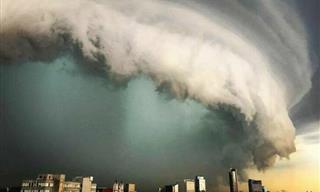
When Nature Strikes, You Can't Hide: 16 Captivating Photos
These 16 photos reveal nature’s fierce side.

15 Animals that Have Drastically Changed Over Time
Humans are not the only ones who are constantly developing. Most of these amazing animals transformed past the point of recognition over time.

There are So Many Reasons for Us to Love Penguins
Penguins are as beautiful as they are fascinating. Here is all you need to know about these wonderful birds...

In Pictures: Royal Entomological Society Photo Contest
Check out the winners of the 2023 Royal Entomological Society photo contest.
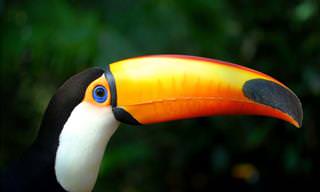
30 Beautifully Mysterious Creatures of the Animal Kingdom
If it was down to me, photography would be nothing more than this: pure, unadulterated photos of lovely wild animals. Here's 30 of the best.

7 Surprising Animals That Have The Ability To ‘Fly’
Here's a look at some unique and surprising members of the animal kingdom that have developed the ability to fly through the air.

Nature Has Never Looked as Fascinating as it Does Here...
Photographers who entered the National Geographic Photography Contest of 2017 searched for and found the most fascinating moments in nature!
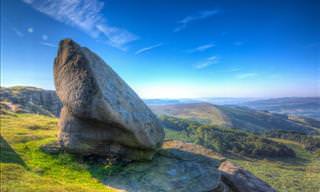
You Will Be Amazed at the United Kingdom's Pure Natural Beauty
The British Isles are ancient lands, filled with history, and also places of sublime natural beauty. Come see these beautiful places close at hand, taken by talented photographers.
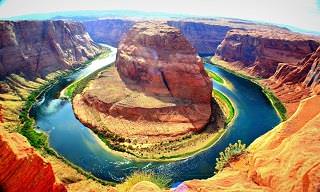
The World Is Full of Beauty, but These Rivers Top It All
These are 15 of the world's most spectacular rivers. Their beauty will mesmerize you!

15 of the Most Beautiful Birds in Brazil's Atlantic Forest
Here is a collection of pictures of some gorgeous and colorful birds from the Atlantic Forest in Brazil.
 5:22
5:22
These Are the Best Animal Moments Ever Captured on Video
Get right into the mouth of the lion with this absolutely incredible compilation of animal videos.
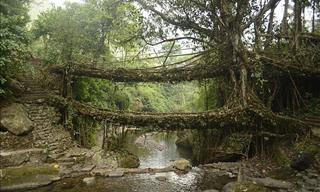
7 Uncommon Trees You've Probably Never Seen Before...
Trees are often underappreciated. Here we present to you some of the most unusual yet fascinating trees from around the globe.
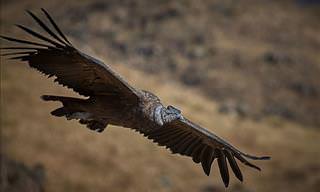
The Oldest Cat in the World Lived Nearly 40 Years!
These creatures and organisms from all around the world are the oldest of their kind, and may even be the oldest living things on Earth!
 3:06
3:06
World's Biggest Snake: This Massive Anaconda Is 26ft-Long!
Scientists have just discovered the world’s biggest snake in Amazon rainforest.
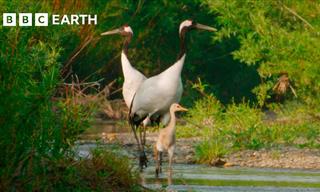 24:51
24:51
Meet Japan’s Wildlife: Bears, Cranes, and Sea Snakes!
Discover Japan’s wild wonders in stunning 4K..
 1:53
1:53
Meet Apollo, the Genius Record-Breaking Parrot
Meet Apollo, a smart parrot who made his way into the record books for his unique ability to identify objects.
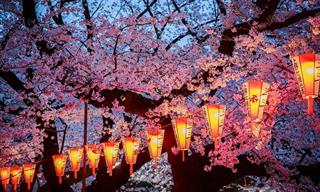
17 Utterly Beautiful Photos of Japan's Cherry Blossoms
The sight of blooming cherry blossoms is synonymous with springtime Japan. Take a look at these beautiful photos to remind you what a wonderful season this is.
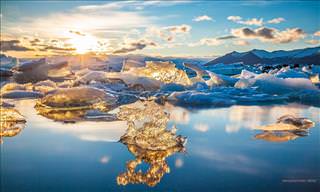
Iceland May Be Cold, But its Beauty Is Other-Worldy
Winter makes much of the world beautiful, but no where is a match for Iceland!

14 Special Animals You Didn’t Know Existed
In our magical world, there are millions of different kinds of animals, some beautiful and some strange. Take a peek at 14 of them right here...
 8:02
8:02
14 Signs Your Cat Sees You as Their Real Parent
Watch for these behaviors to understand just how much you mean to your cat, less an owner and more as a parent.

Can We Introduce You to Some Animals You've Never Seen?
Everyone knows all about the world's common animals, but we bet you've never seen any of these animals before!
 14:42
14:42
Do Our Cats Love Us? A Fascinating Experiment
This cat owner decided to put his 2 cats to a test usually prescribed to toddlers.
 19:12
19:12
Dads of the Wild: Animal Kingdom's Paternal Protectors
These animal fathers show unwavering dedication.
 3:30
3:30
How Deep Does the Ocean Go? This Animation Reveals All!
Just how deep is the ocean? This interesting animation by Tech Insider reveals all.

If You Want to See Some Breathtaking Beauty, Come In Here...
Check out the astonishing winning panoramic images from the 2023 EPSON International Pano Awards.

Ocean Photographer of the Year 2024: 18 Winning Pics
Marvel at the best winning shots from the Ocean Photographer of the Year 2024.
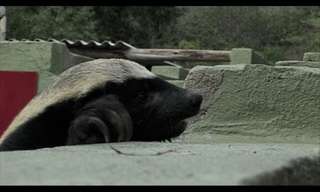 4:12
4:12
Houdini Is Back, And He's a Honey Badger Now...
An amazing video that every animal-lover should see.

Looked at from Up-Close, This Species is Truly Intriguing!
This talented photographer has focused on a creature most of us would never think of photographing in this way.

In Pictures: 2023 BirdLife Australia Photography Awards
Check out the majestic winners of the 2023 BirdLife Australia Photography Awards.

20 Animal Facts We're Sure You Never Knew About Before
We bet that you've never heard about these intriguing animal facts.
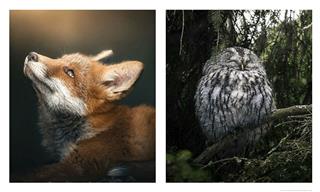
Intimate Glimpses of Foxes, Birds, and Elk in Nature
Check out these stunning close-up wildlife photos by Finnish photographer Ian Granström.

18 Gorgeous Fish You've Got to See!
The oceans hold countless amazing creatures, such as these 30 fish considered the most beautiful in the world...
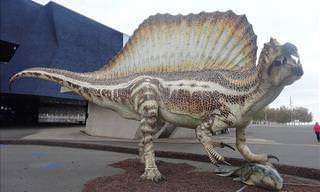
You Won't See These Massive Reptiles in Any Zoo
Your mind will be figuratively blown by the monumental size of these incredible dinosaurs and other reptiles that once roamed the Earth.

The Beautiful World of Indian Birds - 21 Gorgeous Photos
Let’s marvel at the exotic beauty of Indian birds.
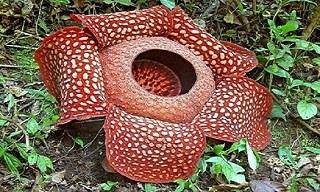
These Have Got to Be Some of the World Strangest Plants
In this world there are pretty plants and then there are talented and bizarre plants. These 12 plants definitely fall into the latter category.

The Land of Ice, Snow and Whimsical Nature in 19 Photos
Admire 19 picturesque photos of nature in one of the most whimsical and stunning place on the planet - Iceland.

When Nature Strikes, You Can't Hide: 16 Captivating Photos
These 16 photos reveal nature’s fierce side.

15 Animals that Have Drastically Changed Over Time
Humans are not the only ones who are constantly developing. Most of these amazing animals transformed past the point of recognition over time.

There are So Many Reasons for Us to Love Penguins
Penguins are as beautiful as they are fascinating. Here is all you need to know about these wonderful birds...

In Pictures: Royal Entomological Society Photo Contest
Check out the winners of the 2023 Royal Entomological Society photo contest.

30 Beautifully Mysterious Creatures of the Animal Kingdom
If it was down to me, photography would be nothing more than this: pure, unadulterated photos of lovely wild animals. Here's 30 of the best.

7 Surprising Animals That Have The Ability To ‘Fly’
Here's a look at some unique and surprising members of the animal kingdom that have developed the ability to fly through the air.

Nature Has Never Looked as Fascinating as it Does Here...
Photographers who entered the National Geographic Photography Contest of 2017 searched for and found the most fascinating moments in nature!

You Will Be Amazed at the United Kingdom's Pure Natural Beauty
The British Isles are ancient lands, filled with history, and also places of sublime natural beauty. Come see these beautiful places close at hand, taken by talented photographers.

The World Is Full of Beauty, but These Rivers Top It All
These are 15 of the world's most spectacular rivers. Their beauty will mesmerize you!

15 of the Most Beautiful Birds in Brazil's Atlantic Forest
Here is a collection of pictures of some gorgeous and colorful birds from the Atlantic Forest in Brazil.
 5:22
5:22
These Are the Best Animal Moments Ever Captured on Video
Get right into the mouth of the lion with this absolutely incredible compilation of animal videos.
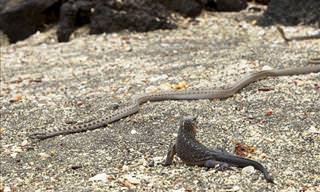 2:17
2:17
This Incredible Animal Video Had Millions Talking About It!
From the moment these baby iguanas hatch, they are faced with a life or death situation. Can they survive the snake gauntlet?
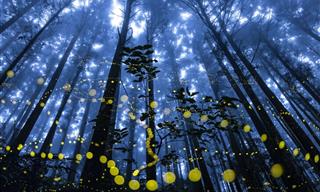
The Landscape Photos Everyone's Talking About This Year
Check out the incredible winning images from the 2024 International Landscape Photographer of the Year.
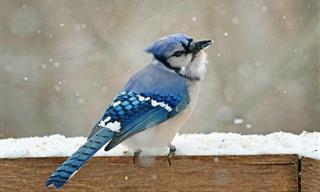
7 of the Most Beautiful and Unique Birds of North America
Some of the most beautiful birds of North America and the Caribbean.
To enable your Ad-Free Subscription, please fill the fields below
Your subscription was successful, now you can enjoy an ad-free experience!!
Note: To make sure you get no ads, please make sure to log in to your account. If you are logged in already, then refresh the page. The subscription can be cancelled at any time.



